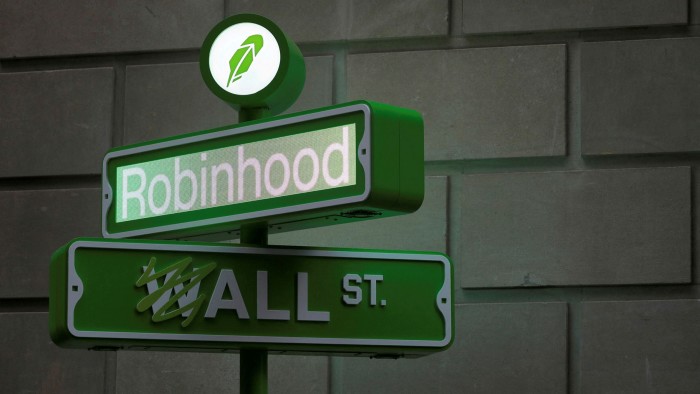Half a trillion dollars wiped from once high-flying fintechs

Simply sign up to the Fintech myFT Digest -- delivered directly to your inbox.
Almost half a trillion dollars has been wiped from the valuation of once high-flying financial technology companies that took advantage of the boom in initial public offerings earlier in the pandemic.
More than 30 fintechs have listed in the US since the start of 2020, according to CB Insights data, as investors flocked to companies they believed could benefit from a long-term shift toward digitisation accelerated by the pandemic.
However, concerns about rising interest rates, lack of profits and untested business models as the economy heads towards a potential recession have put them at the sharp end of this year’s sell-off.
Shares in recently listed fintechs have fallen an average of more than 50 per cent since the start of the year, according to a Financial Times analysis, compared with a 29 per cent drop in the Nasdaq Composite. Their cumulative market capitalisation has fallen $156bn in 2022. If each stock is measured from its all-time high, around $460bn has been lost.
A second-quarter update from online lender Upstart last week typified the challenges facing many fintechs. The company, which says it uses artificial intelligence to make consumer loan decisions, blamed the “tumultuous economy” for slowing down revenue growth and driving up losses.
This was exacerbated by comparison to an exceptionally strong result in the same quarter last year, when the contrast with economic lockdowns in 2020 led to annual revenue growth of more than 1,000 per cent.
The pressures have also hit more well-established companies like PayPal and Block — formerly known as Square — which have shed almost $300bn in market cap between them this year.
The decline in public market valuations has filtered through to private companies. Klarna slashed its price tag from $46bn to under $7bn in a private funding round earlier this month, and the Wall Street Journal reported this week that Stripe had cut its internal valuation by more than a quarter.
Dan Dolev, analyst at Mizuho, said fintechs — particularly digital payments firms — were “the first part of the tech sector to benefit greatly from Covid, because everyone was stuck at home and buying stuff online”.
“Now they are overcorrecting to the downside ahead of other sectors too.”
Dolev said he expected to see a rebound for many companies in the second half as year-on-year comparisons become more flattering.
Some companies also face additional pressure from regulators. The Securities and Exchange Commission is reviewing perceived conflicts of interest created by “payment for order flow”, the main source of revenue for online broker Robinhood, and SEC chair Gary Gensler has called for clearer oversight of cryptocurrency markets. The Consumer Financial Protection Bureau also launched an inquiry into “buy now, pay later” firms last December.
Results from traditional financial services have been affected as well. Wells Fargo on Friday blamed a $576mn write down in its investment portfolio for missing analyst’s revenue expectations. Wells Fargo Strategic Capital was one of the largest investors in fintechs last year, according to CB Insights.
Despite the litany of challenges, many investors are still backing the sector. Cathie Wood’s ARK Fintech Innovation ETF, one of the most popular funds dedicated to the sector, has tumbled 62 per cent this year, but net outflows have been less than $90mn, dwarfed by the $2.7bn in inflows over the previous two years. After a sharp decline earlier in the year, investors added a net $31mn since the start of June.
Pedro Palandrani, director of research at Global X, which runs another fintech-focused ETF, said: “It’s likely that in the rest of 2022 we’re going to continue to see some of these companies face some pressures — rising rates are going to create challenges for companies on the lending side of things and [buy now pay later] in particular.”
However, he added that “despite the increased risks in the market, we’re only down about $40mn in net outflows year to date . . . it really shows that investors continue to believe a lot in this sector over the long term”.
Comments